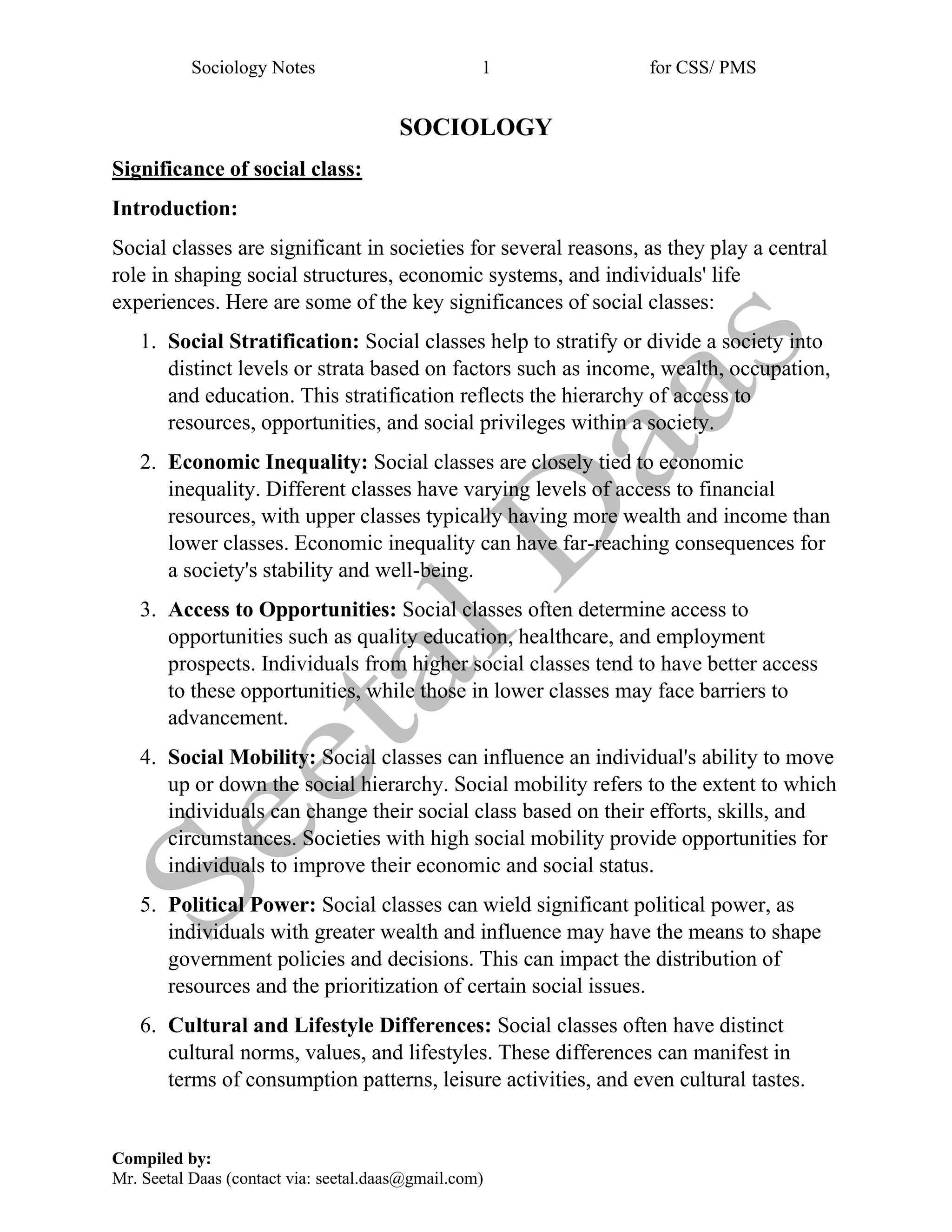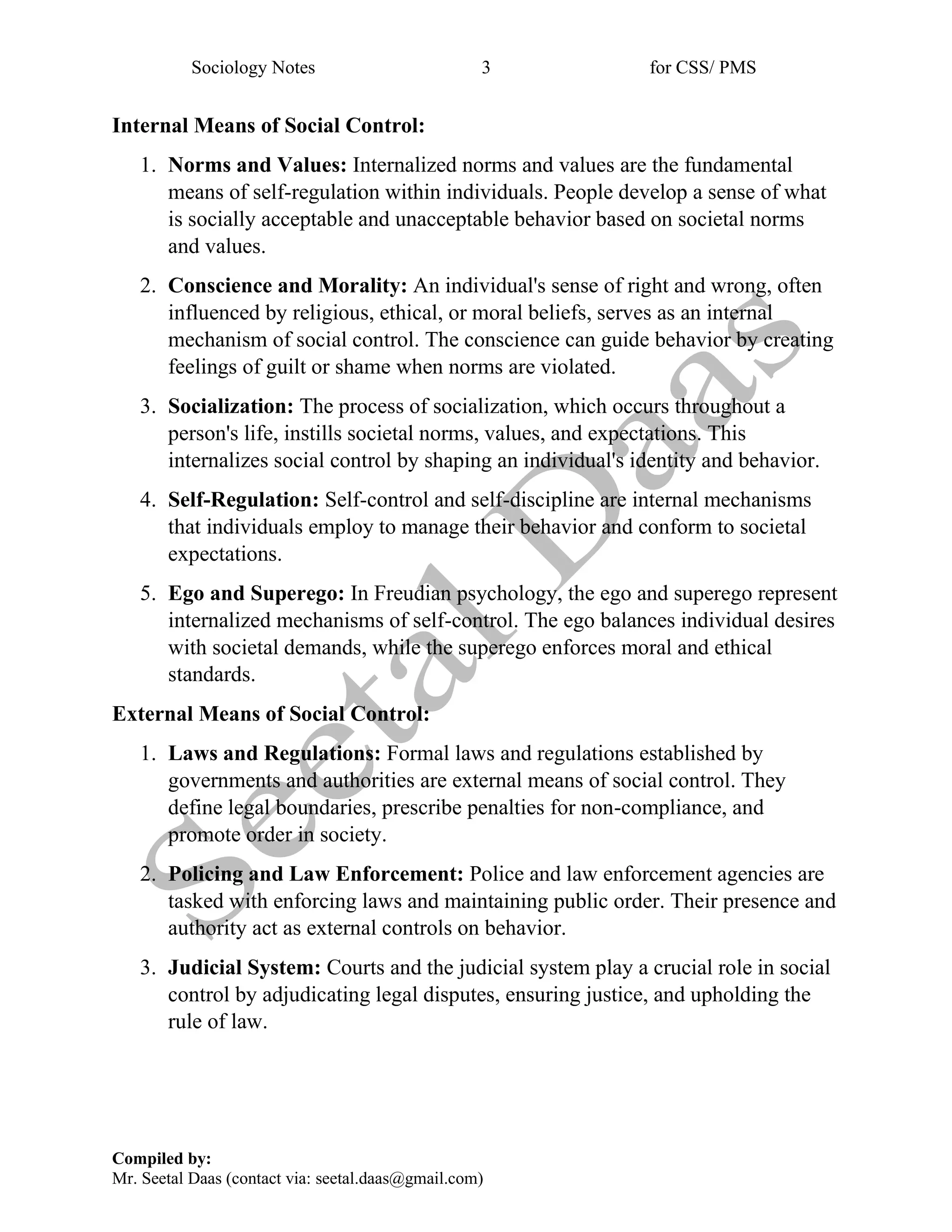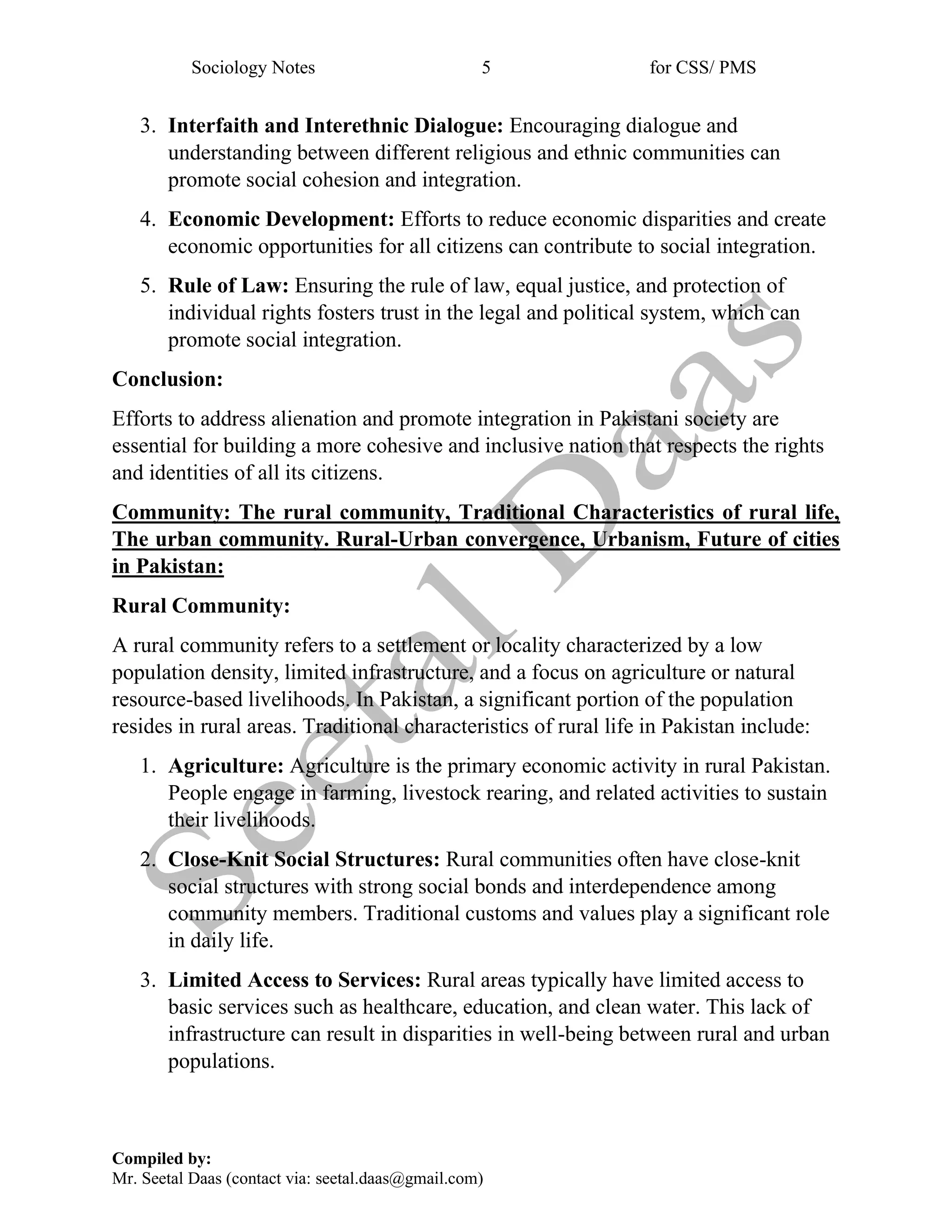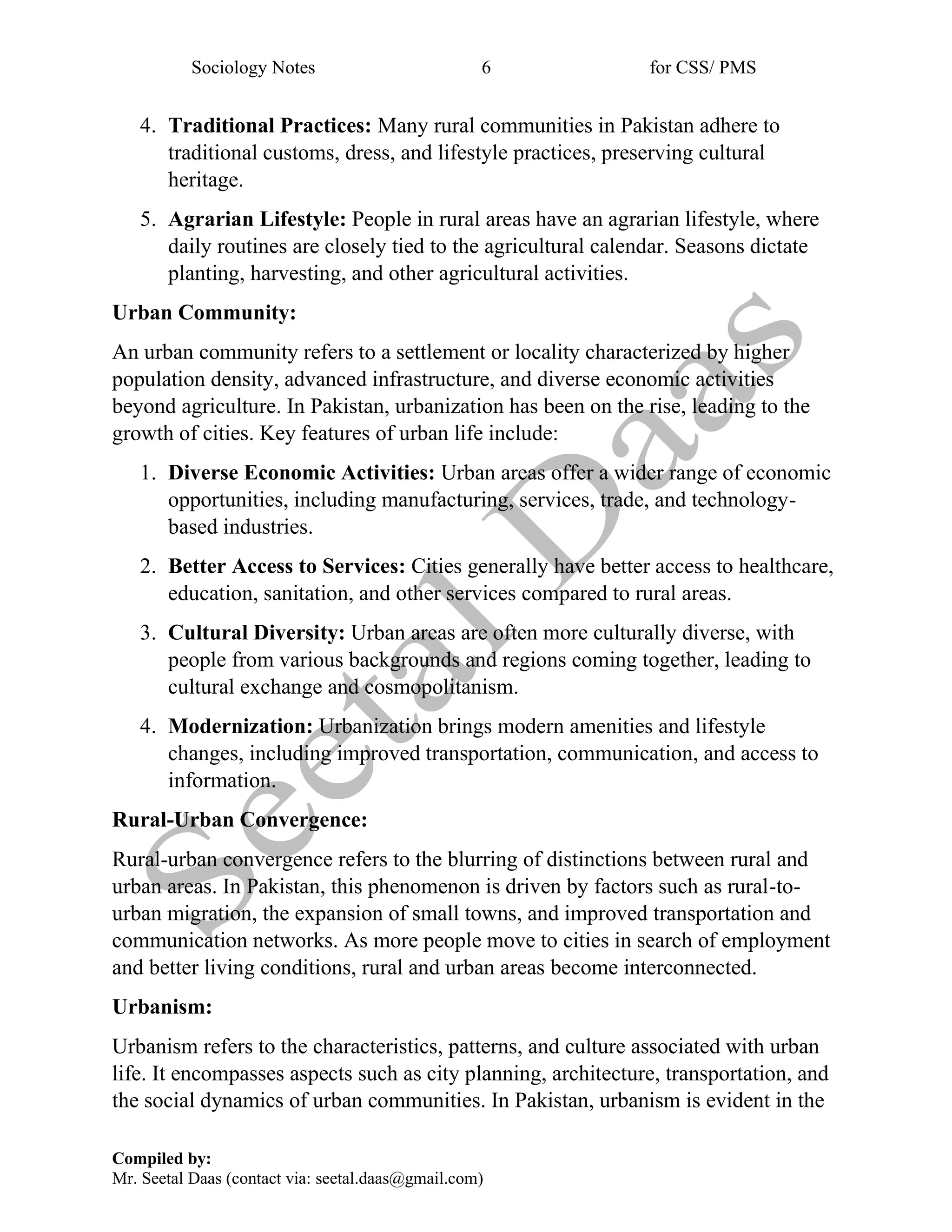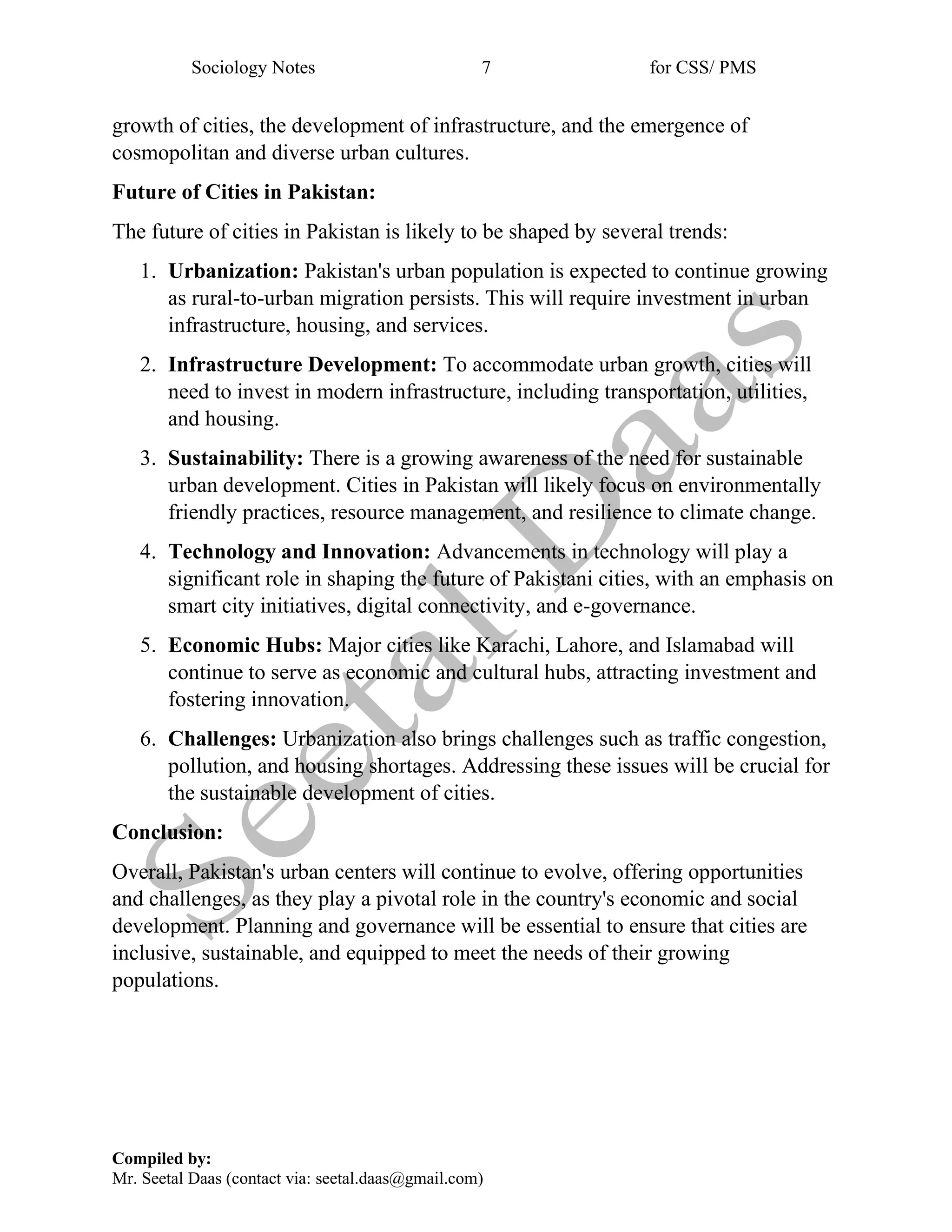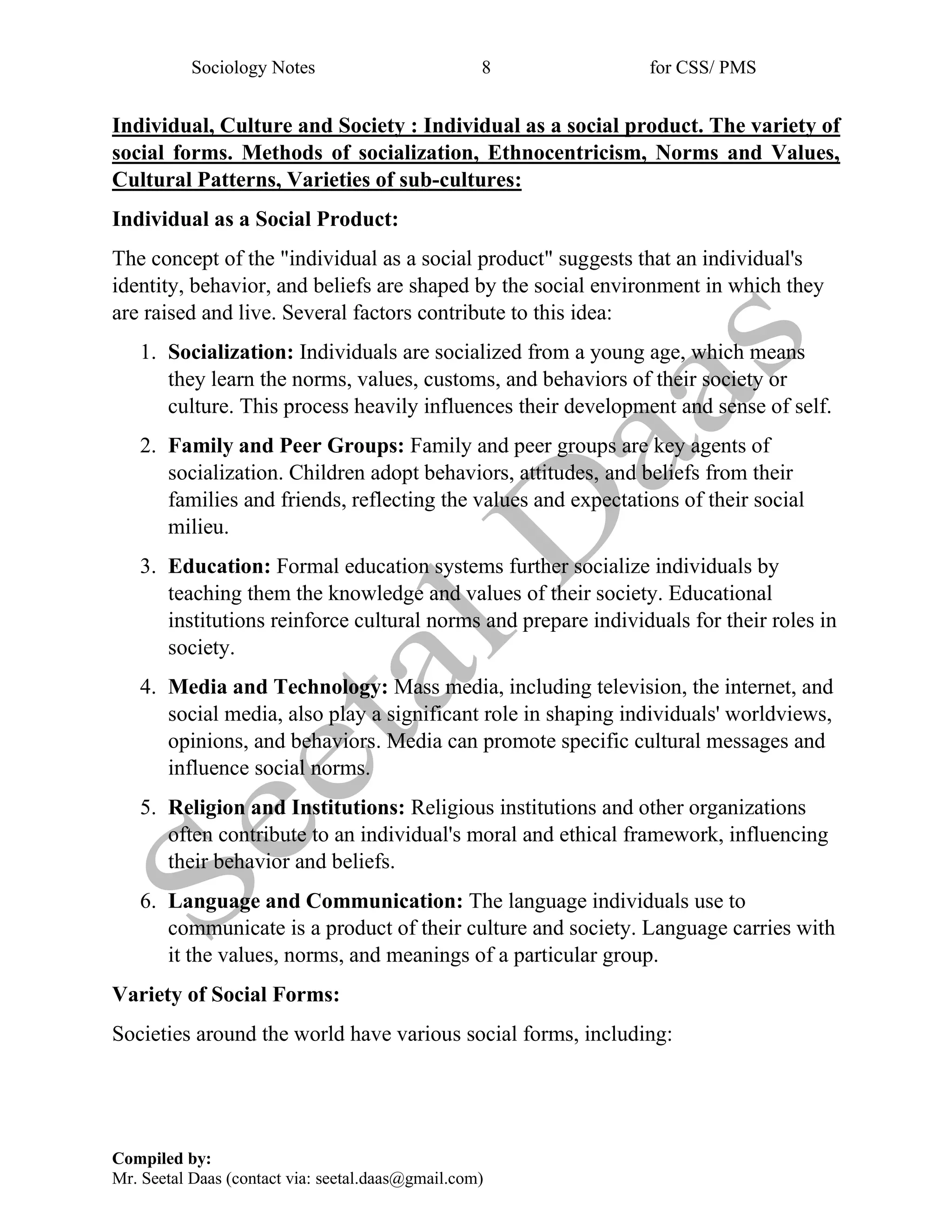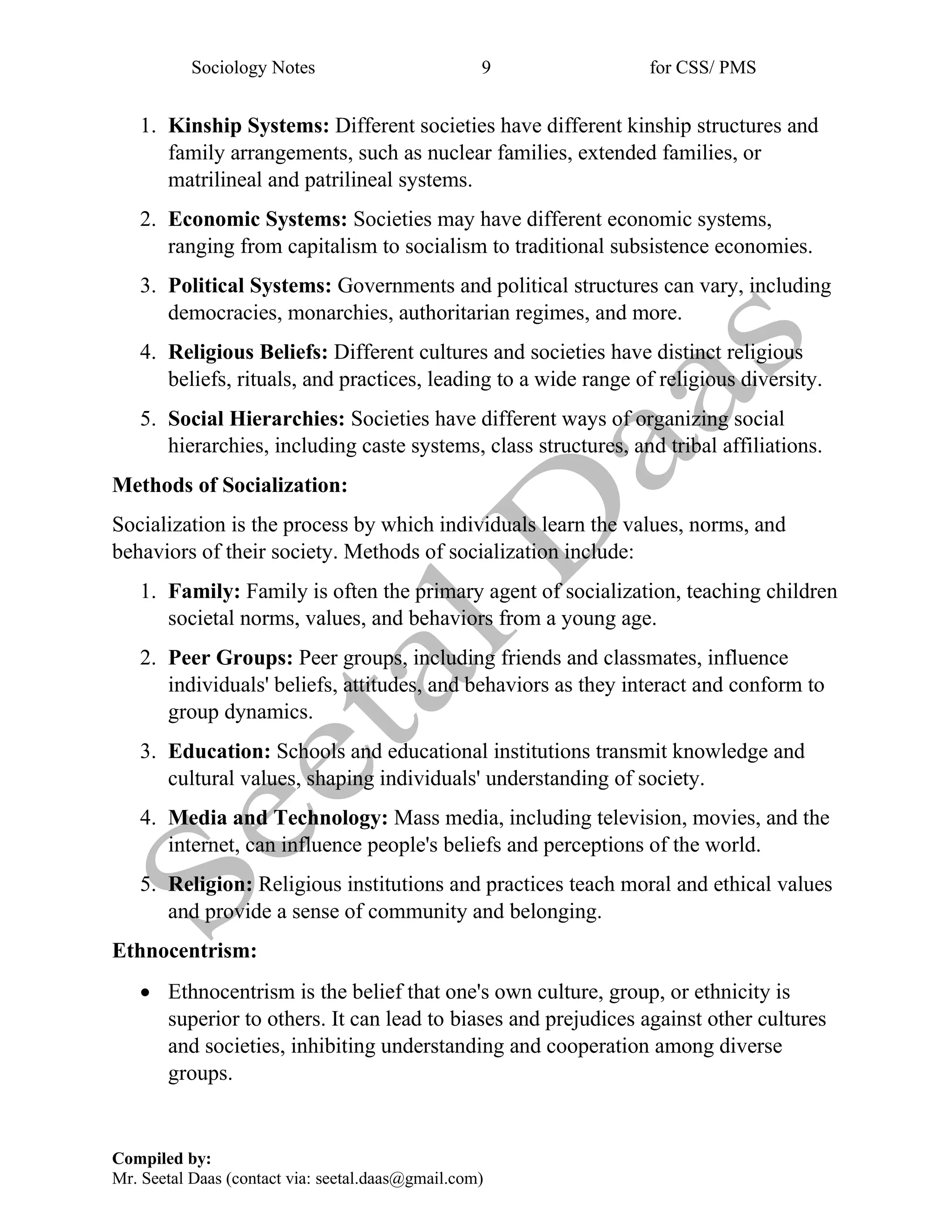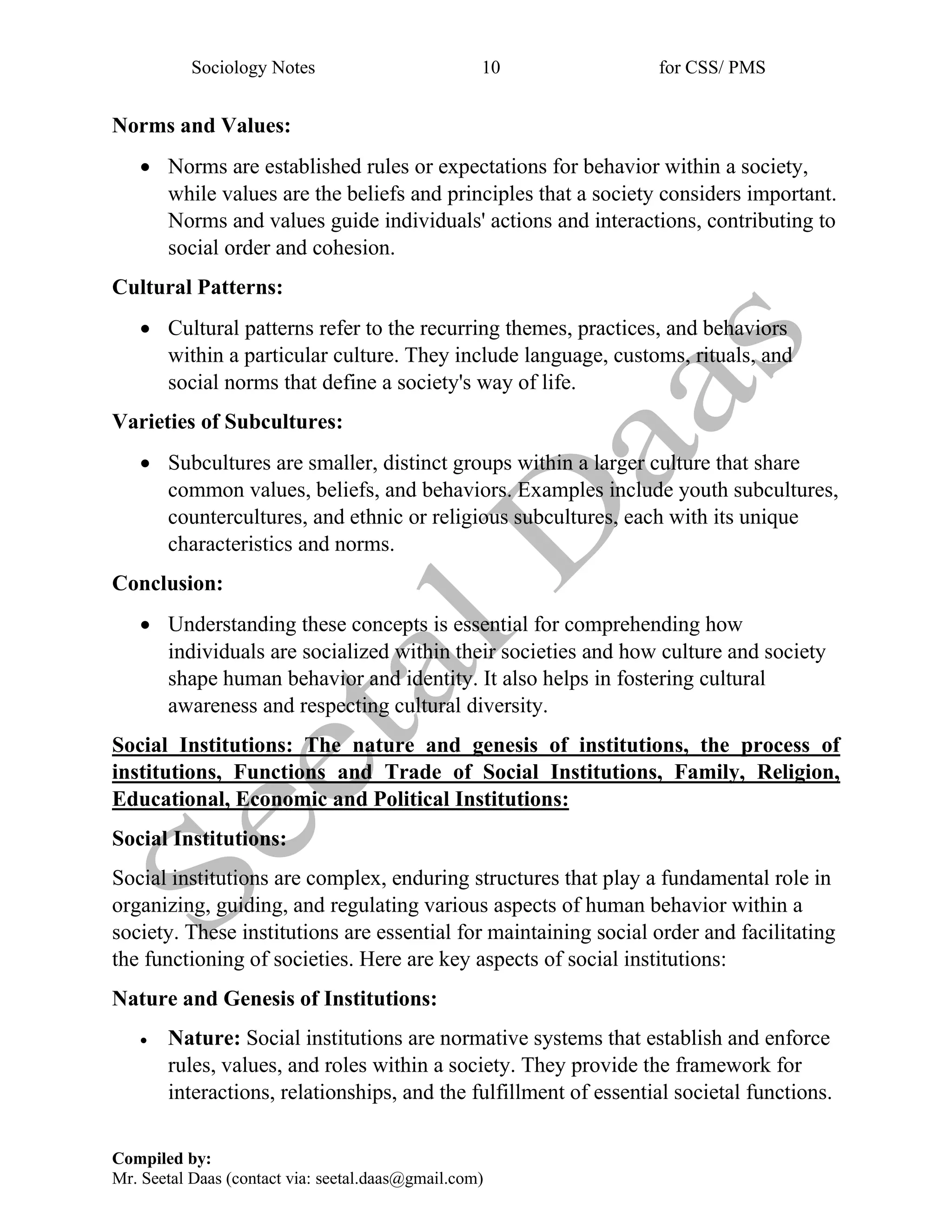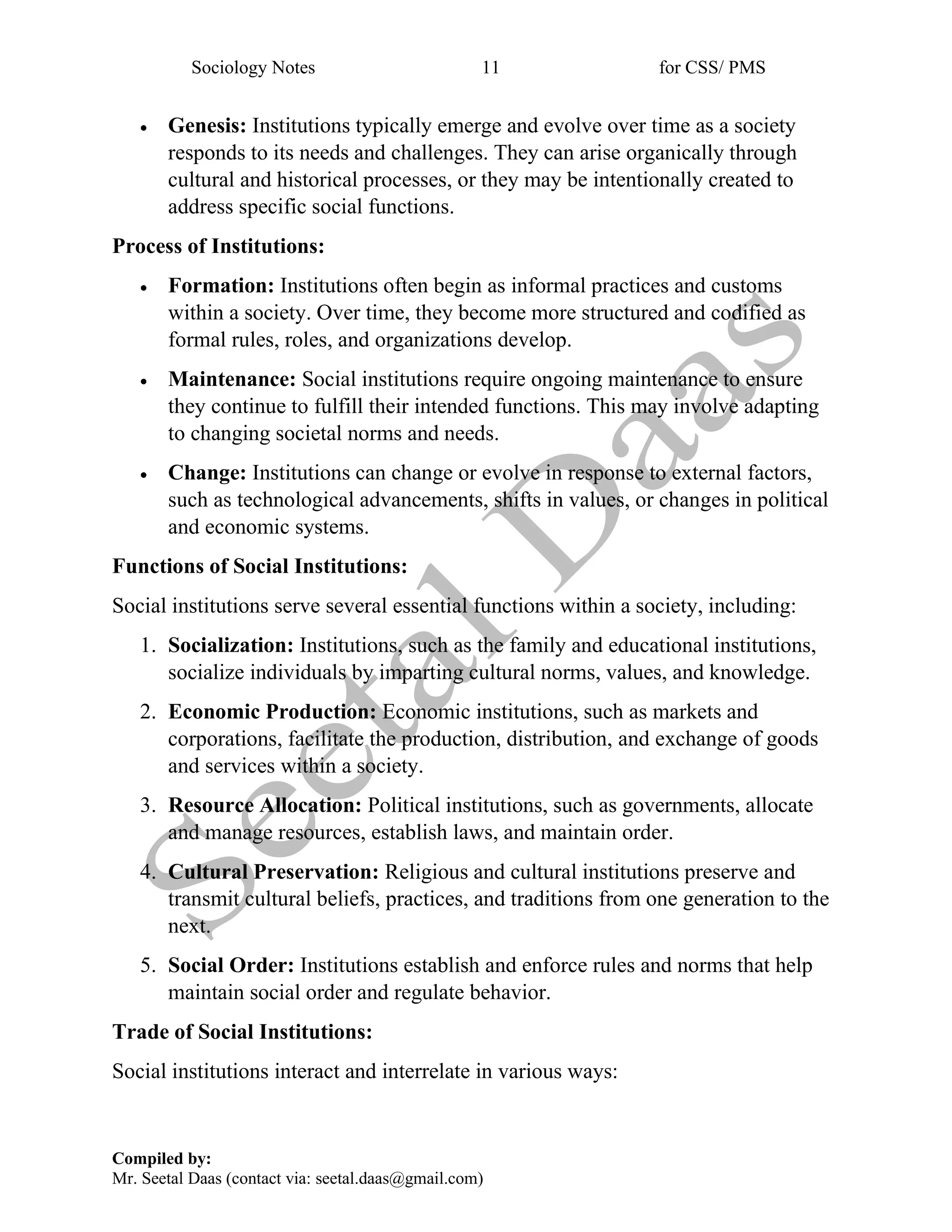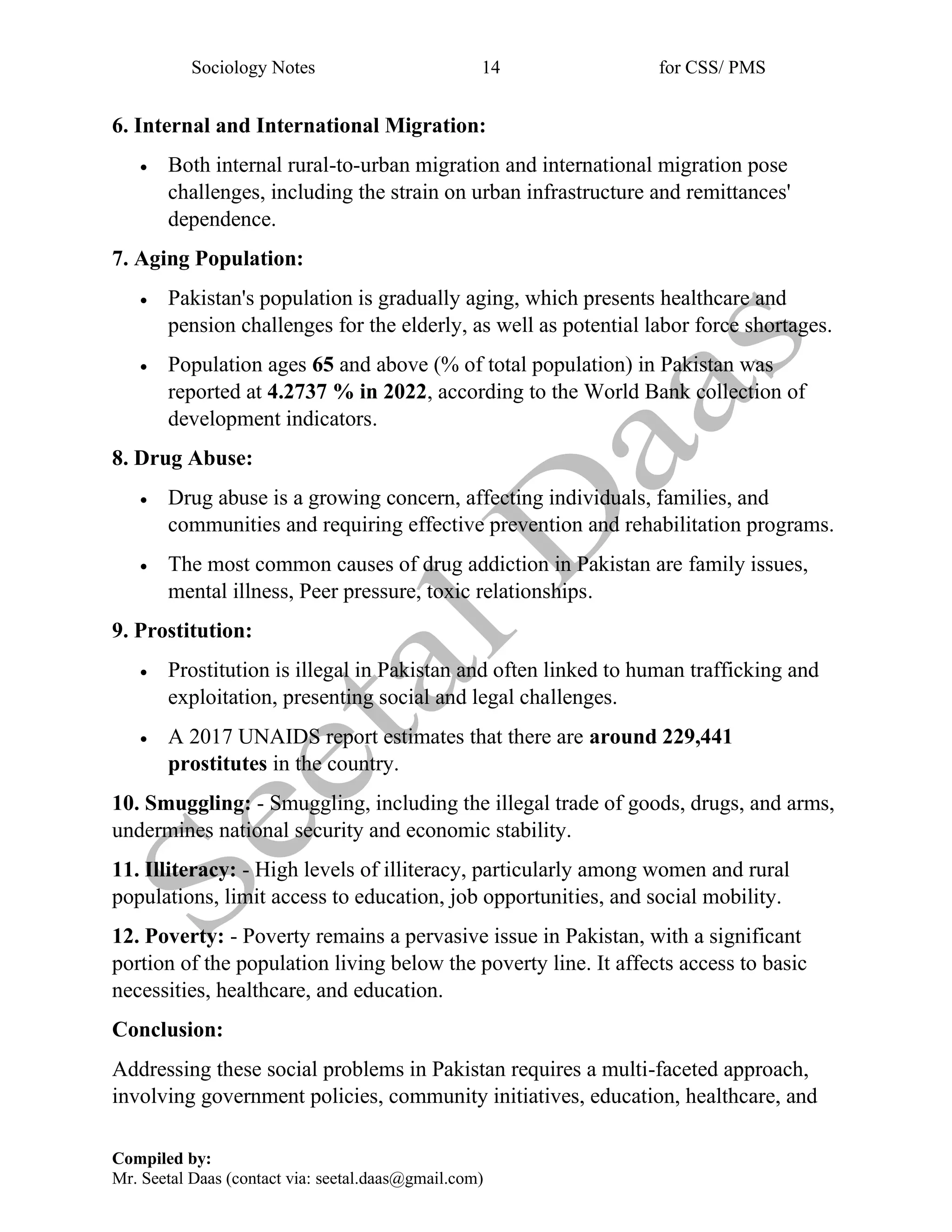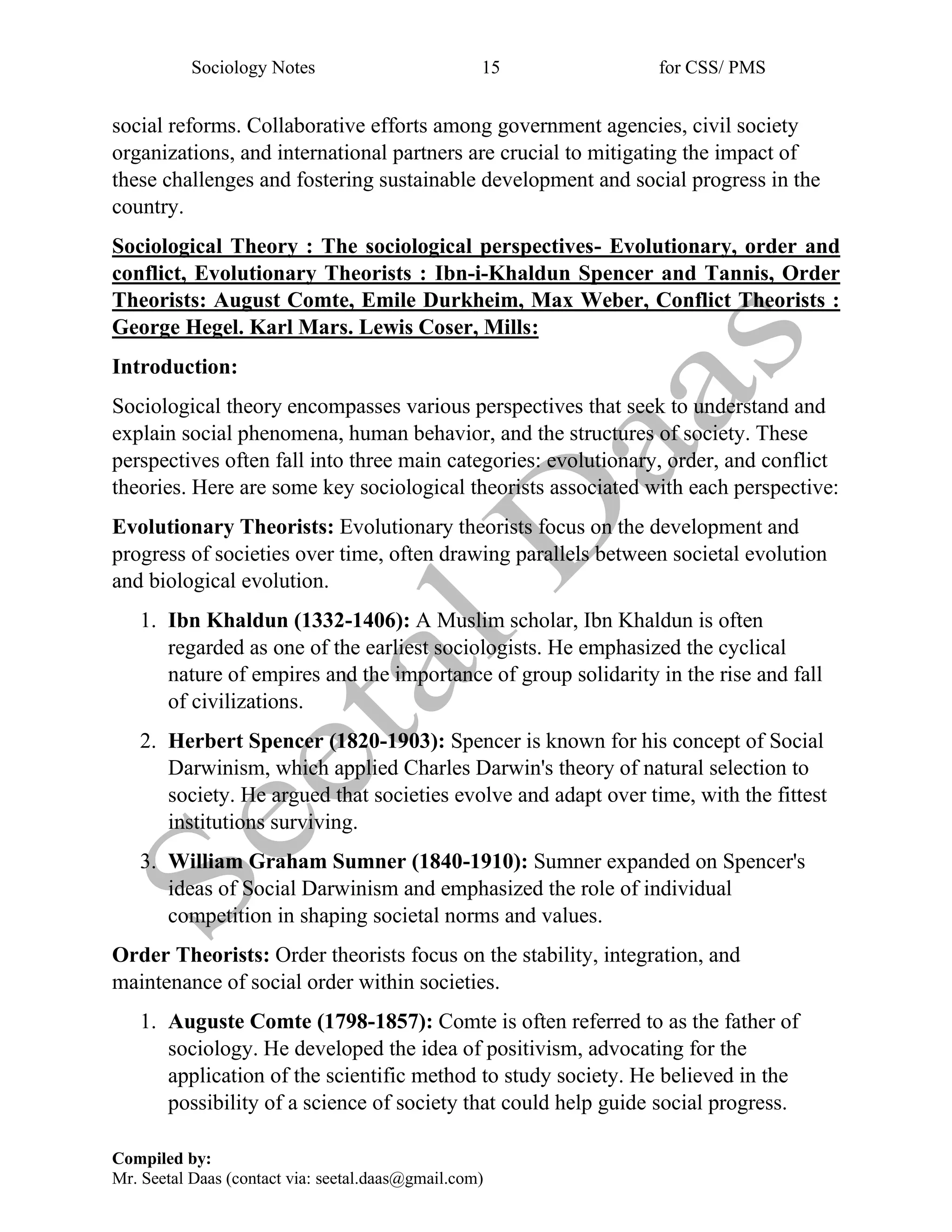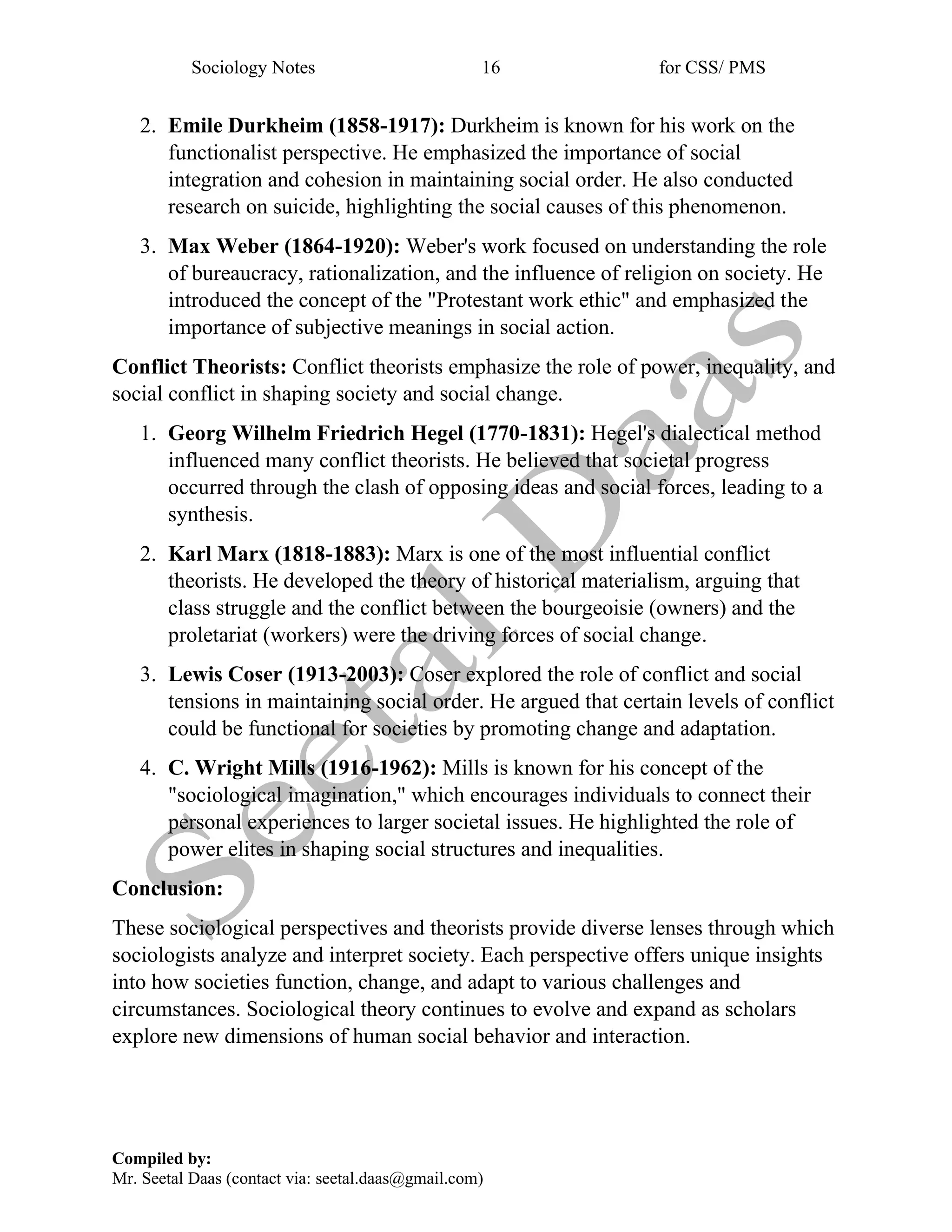This document provides summaries of key sociological concepts related to social class, social control, integration and alienation in Pakistani society, and rural and urban communities. It discusses the significance of social classes, including their role in social stratification, economic inequality, access to opportunities, social mobility, political power, and cultural differences. It also outlines internal and external mechanisms of social control, such as norms, laws, and peer pressure. Factors contributing to alienation in Pakistani society are explored, as well as ways to promote social integration, including through national identity, education, and economic development. Finally, it describes characteristics of rural communities in Pakistan and contrasts them with urban areas.
